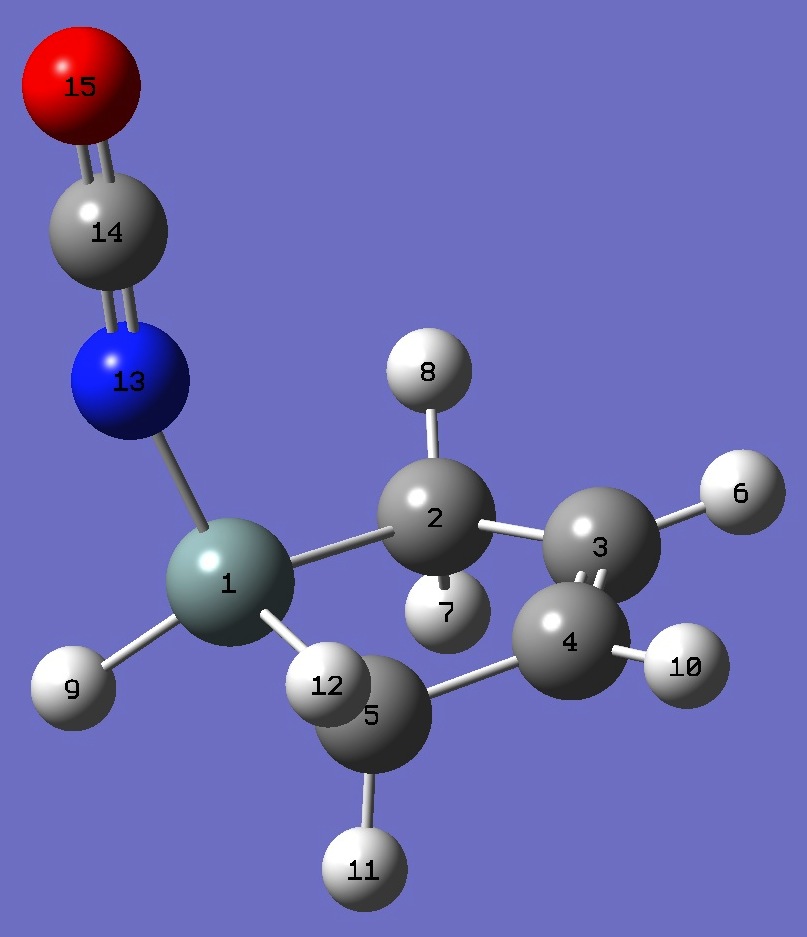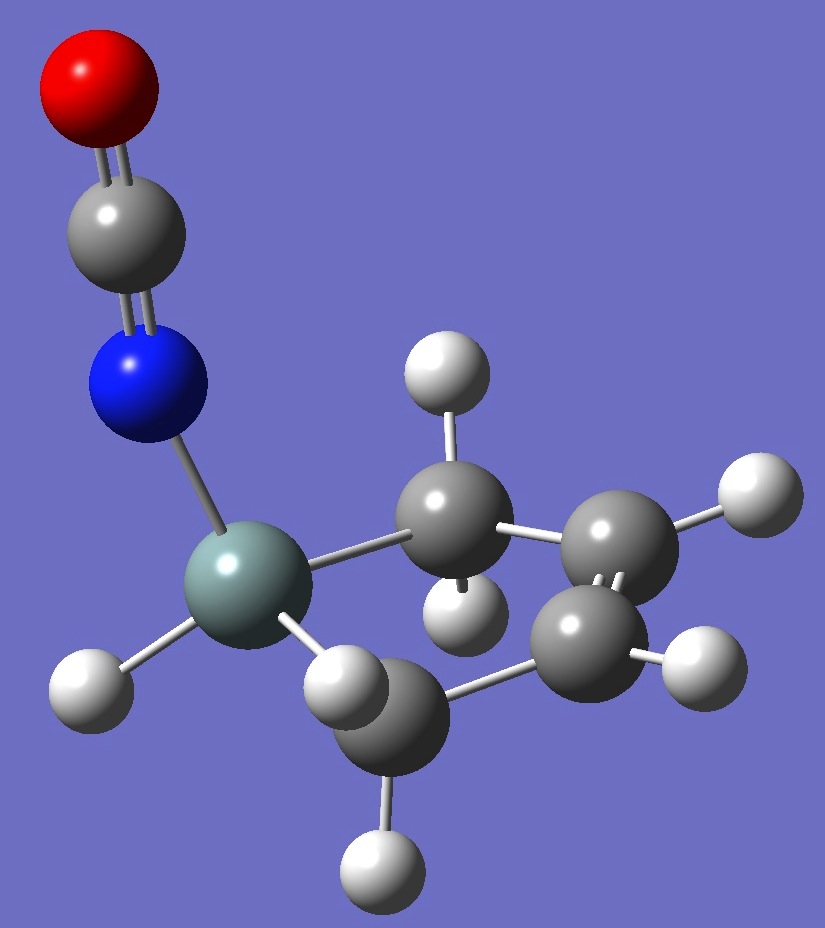|
|
|
|
|
| Table 2. 1-Isocyano-1-silacyclopent-3-ene.
MP2(full)/6-311+G(3df,3pd) ropt (Å and
degrees). |
| |
|
|
|
 |
Si
C,1,B1
C,2,B2,1,A1
C,3,B3,2,A2,1,D1,0
C,4,B4,3,A3,2,D2,0
H,3,B5,2,A4,1,D3,0
H,2,B6,1,A5,5,D4,0
H,2,B7,1,A6,5,D5,0
H,1,B8,2,A7,3,D6,0
H,4,B9,3,A8,2,D7,0
H,5,B10,4,A9,3,D8,0
H,5,B11,4,A10,3,D9,0
N,1,B12,2,A11,3,D10,0
C,13,B13,5,A12,4,D11,0
O,14,B14,13,A13,5,D12,0
|
|
|
|
|
|
|
|
|
|
|
|
|
|
|
B1=1.8695957
B2=1.50644659
B3=1.34091713
B4=1.50644659
B5=1.08335079
B6=1.09229052
B7=1.08928247
B8=1.46821794
B9=1.08335079
B10=1.09229052
B11=1.08928247
B12=1.71582809
B13=1.19987027
B14=1.17370723
A1=100.89178012
A2=118.74463401
A3=118.74463401
A4=120.39749672
A5=112.04697043
A6=113.43920644
|
A7=116.38718445
A8=120.85514002
A9=111.11706497
A10=112.33105111
A11=110.38531329
A12=131.64937155
A13=178.05344203
D1=13.56028138
D2=0.
D3=-167.03555512
D4=100.29425819
D5=-138.32547863
D6=-141.7599018
D7=179.40133919
D8=105.39226006
D9=-134.68844276
D10=96.62414779
D11=-71.50522255
D12=-140.66592907
|
|
|
|

